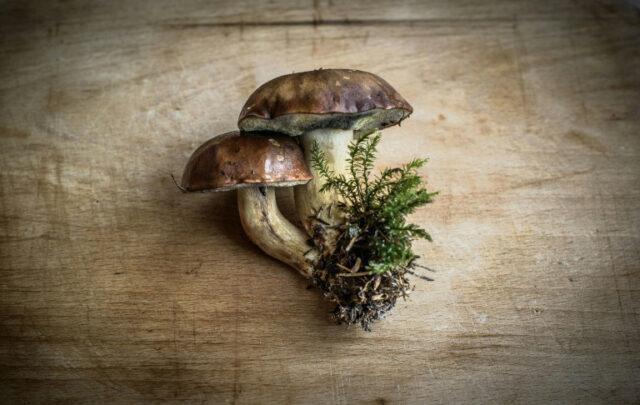
My sister Jenny went out to pick apples the other day and found a Cinderella pumpkin growing up in her Winesap tree. See the photo. Some of you, being as disbelieving as I am, will suspect that someone stuck that pumpkin up there just for fun, but I assure you that is not the case. You can imagine how it happened. Turn your back on a pumpkin vine and it will run off down the road and join the army. This one snaked up the apple tree when no one was looking and put on blossoms. One of them formed a pumpkin which just so happened to be in a position to balance itself between branches and prosper, almost hidden from view.
This tree pumpkin conjures up all sorts of ideas. What other crops could we save space with by training them up trees? I once visited a farmer in Pennsylvania who allowed grape vines to grow up his yard trees to produce a visual delight: golden fall leaves dripping with bunches of purple Concord grapes.
My contrary mind goes in another direction. I wonder how often in human history has the juxtaposition of unrelated objects led to wrong conclusions. I doubt even the most primitive cave dweller would conclude that there was such a thing as a pumpkin tree, but look how often similar silly notions have gotten started. As a child, I was told that horsehair snakes (Nematomorpha) really came from horsehairs and that toads generated from lumps of mud. Being the consummate disbeliever even then, I put some hairs from our draft horse, Flora, in the horse trough and waited quite a long time for them to come alive.
Rural people of my age often suffer from “hawk-o-phobia,” to coin a word. I know a couple who are convinced that “hawks” are to blame for the disappearance of their cats. Sometimes a great horned owl will kill a cat, the books say, but I can’t find any case of a hawk doing the same. In my generation’s childhood, hawks were blamed for killing chickens because hawks are always circling around in the sky. Most species of hawks do not kill chickens. The red-tail hawk will, but only very rarely. Most likely what is killing these folks’ cats are cars on the road or a neighbor who is tired of prowling cats killing his chickens.
When I suggested that hawks were not to blame, the couple then decided that the problem was coyotes, another animal often wrongly blamed because of juxtaposition-thinking. I suppose anything can happen, but it would take a mighty stupid coyote to try to kill a cat. I have often watched dogs attack cats. If the cat can’t find a post or tree to climb, it sends the dog packing with a mangled nose.
wonder how often we are still making errors because of juxtaposition-thinking. For example, medical science has insisted for forty years now that eating certain foods causes blockage of the arteries which in turn leads to heart attacks. But in the last ten years, a significant amount of evidence has been piling up that puts that contention in doubt. I wonder if some day the cholesterol-diet-heart disease relationship might be just another case of juxtaposition thinking.
Anyway, I do know that pumpkins don’t grow on apple trees, but the idea has its own practical logic. Overpopulating deer in our area have grown fond of gnawing on our pumpkins. Why not train our future pies to vine up the orchard trees. Take that, you infernal deer.





